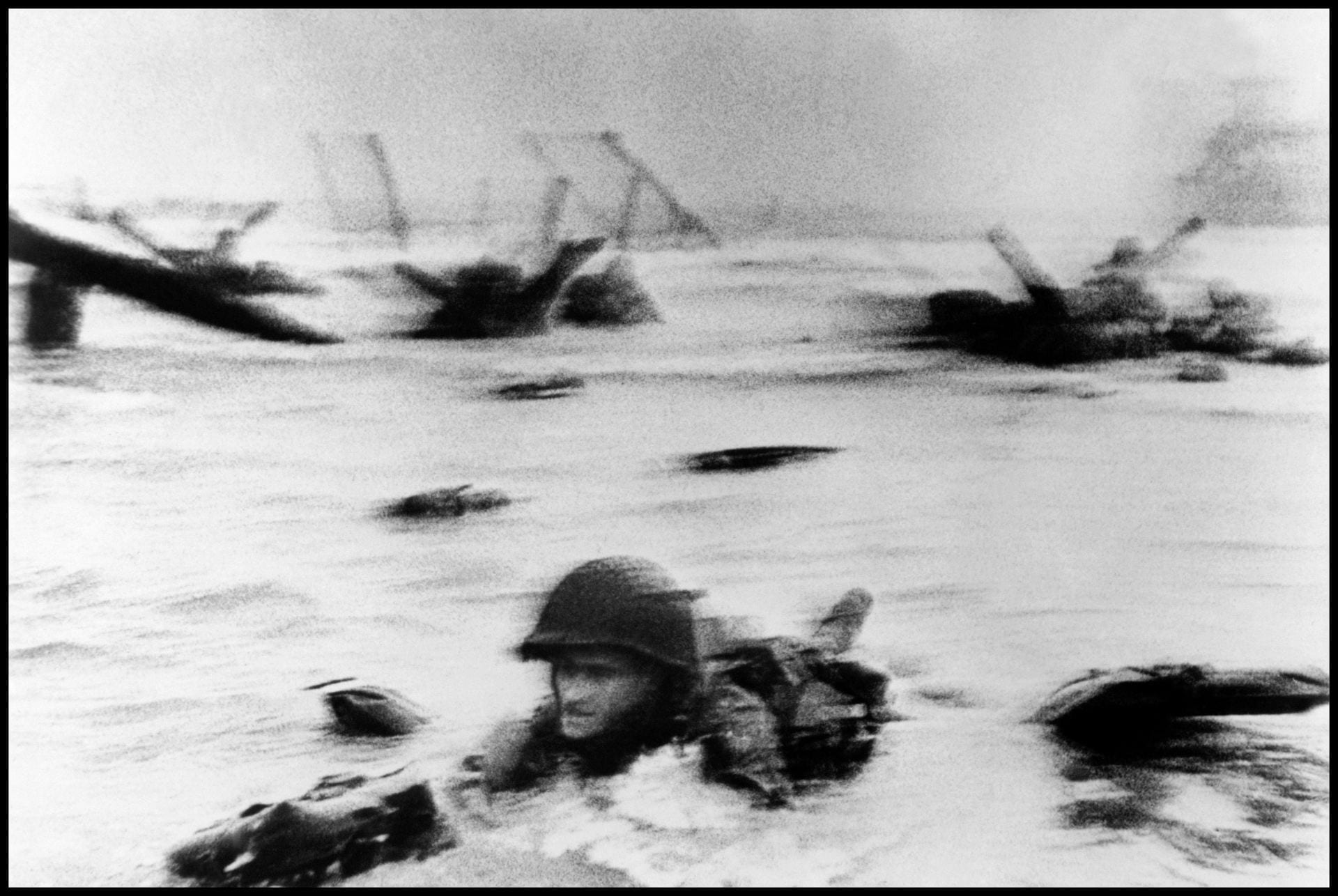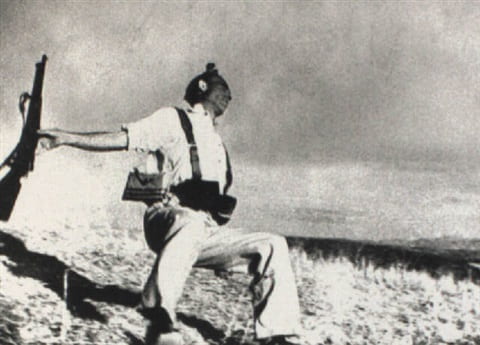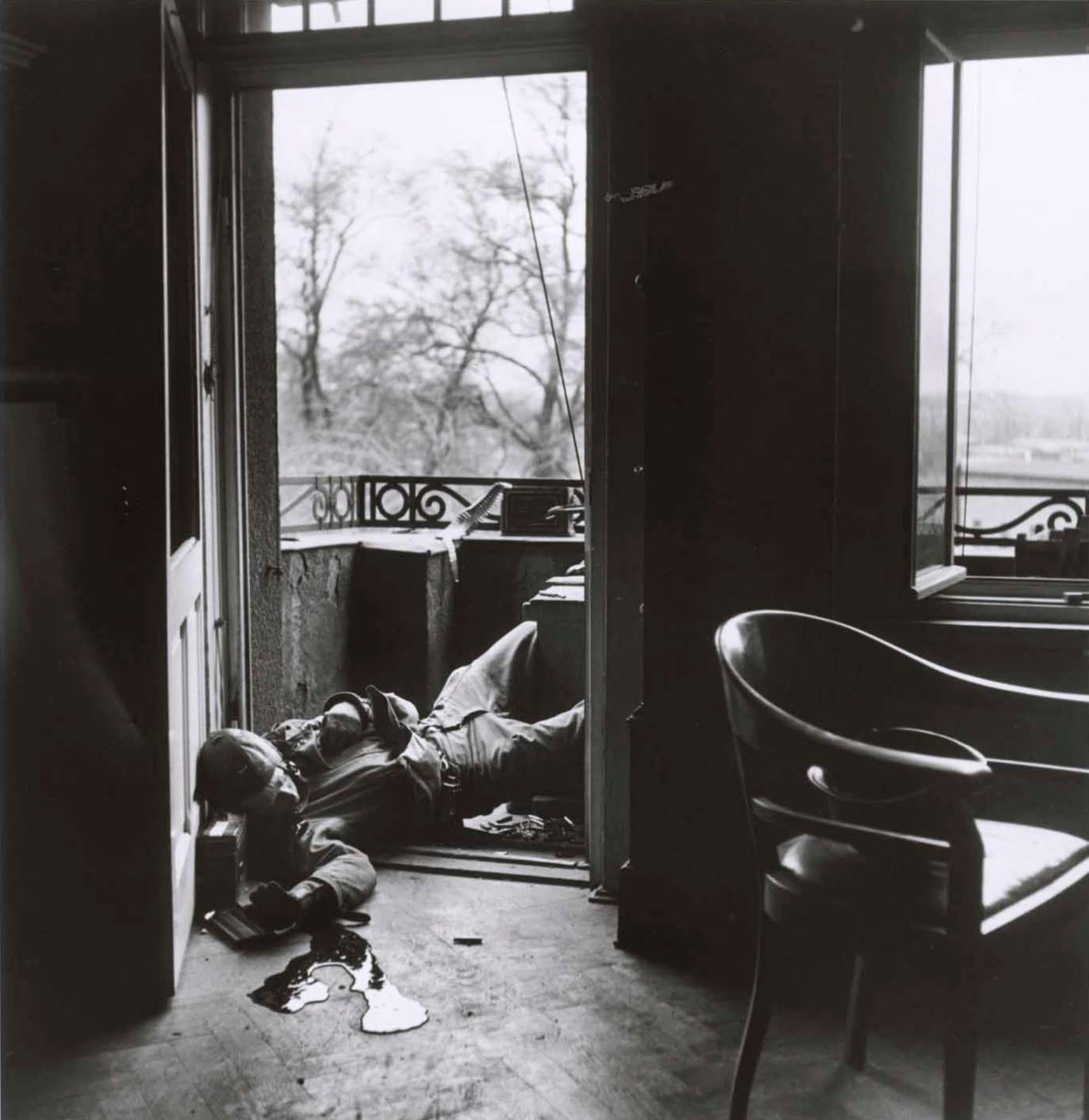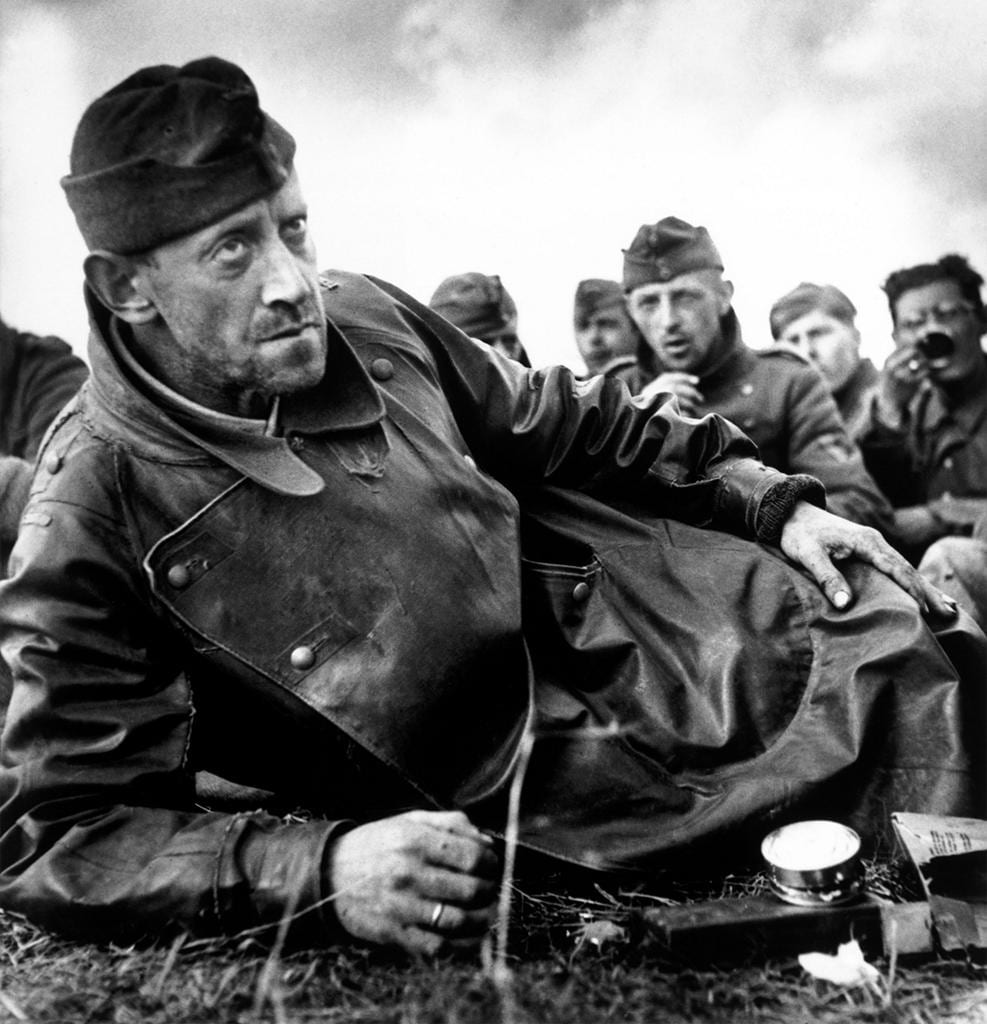“On 3, December 1938 Picture Post introduced The Greatest War Photographer in the World: Robert Capa with a spread of 26 photographs taken during the Spanish Civil War.
But the ‘greatest war photographer’ hated war.”
-Magnum Photos
During the violent conflicts of the 20th century, many were armed with weapons. Robert Capa was one of the few who wasn’t. Instead, he was armed with a Contax II camera, and a Zeiss 50mm lens. You could also say his intent was different. He wasn’t there to fight or kill. Instead, he was there to capture moments in time. He wanted to show the world the horrors of war. It took bravery, perseverance, and great personal risk, but that’s exactly what Capa did. Capa created some of the most powerful images of war, capturing emotion and suffering through his work.
Robert Capa is truly eminent. He was one of the best-known war photographers of the mid-1900s; who risked his life during the Spanish Civil War, the Second Sino-Japanese War, The Second World War, and the First Indochina War. Capa revolutionized photojournalism, using a small 35mm camera, making it easier for him to quickly take photos, and carry all his gear. His photos were also different from the rest, as he was always in the action, capturing war from almost a soldier’s perspective. This was aligned with his motto, “If your pictures aren’t good enough, you aren’t close enough.” Robert Capa’s dedication to photojournalism was intense. It was his dedication that got him killed, always pushing for a better photo or angle. This dedication set the benchmark for what a photojournalist should strive to reach, with the Robert Capa Gold Medal Award being awarded annually for “Best photographic reporting from abroad requiring exceptional courage and enterprise published in any medium”.
Throughout his Life, Robert Capa faced hardship and struggle. In 1913, Capa was born into a middle-class Jewish family in Budapest, Hungary. During his later teenage years, Capa became involved with a radical socialist group, known as the Munkakör. Not long after, he was arrested by the Hungarian secret police, beaten and exiled. Capa then moved around Austria and Germany, before settling in Berlin, where he studied political science and worked in a dark room part-time. In 1933, The Nazi party came to power in Germany, and once again, Capa was forced to relocate, ending up in Paris. In Paris, Capa shared a Darkroom with famous candid photographer Henri Cartier-Bresson, before travelling to Spain, where he photographed the Spanish Civil War. Despite being persecuted for his political views and religion, Capa persevered through hardship, working hard to better his craft. With his perseverance, he became one of the best-known photographers of the mid-1900s.
So why did I pick Robert Capa?
I picked Robert Capa for my eminence project for two reasons. First of all, Capa is a very influential photographer. I have a passion for photography, so having the ability to research a famous photographer in-depth is very interesting to me. Secondly, I picked Capa, as he photographed war in then 20th century, which is something I am interested in. Since I am passionate about both history and photography, I view Capa as being a bridge between the two.

To demonstrate the similarities and differences between Robert Capa and myself, I used this Chart.
| Robert Capa | Evan |
|---|---|
| Male of European Descent | Male of European Descent |
| Hungarian | Canadian |
| Jewish | Not Jewish/Not Religious |
| War-Photographer/ Photojournalist | Aspiring Photographer |
| Left Wing, Associated with socialist groups/parties | Not Associated with socialist groups or parties |
| Privileged Upbringing | Privileged Upbringing |
| 2 sibilings | 2 sibilings |
| Shot Film Photography | Shoots Digital Photography, wants to learn how to shoot film |
| Photographed World War 2 and Spanish Civil War | Interested in World War 2 and Spanish Civil War |
There are a few things that I have in common with Robert Capa as well as a few differences.
One barrier between Robert Capa and myself is that he was born Jewish, and faced persecution for being so, while I am not at all religious. As I am giving the speech as an inanimate object, I don’t see this as much as a problem, though I will be addressing the persecution he faced throughout his life because of his religion.
I believe I am similar to Capa in a way, as we both share a passion for photography. Though I am unsure if I share any qualities with Capa, I aspire to emulate his bravery and perseverance.
I believe Eminence marks the start of a long and challenging (but rewarding) road through Talons. One goal I have for myself is to persevere through Talons, no matter if what. Robert Capa exemplifies this, as he has persevered through just as much as anybody during his life, from being persecuted for religion and political views, to losing loved ones.
I am super excited for Night of the Notables, though I want to improve my public speaking/interaction skills, so I am not awkward when presenting my learning center. Additionally, I aim to continue researching and memorizing information on Robert Capa, , so I won’t have to refer to my notes during the learning centers.
Evan



0 comments on “Robert Capa “The Greatest War Photographer”” Add yours →